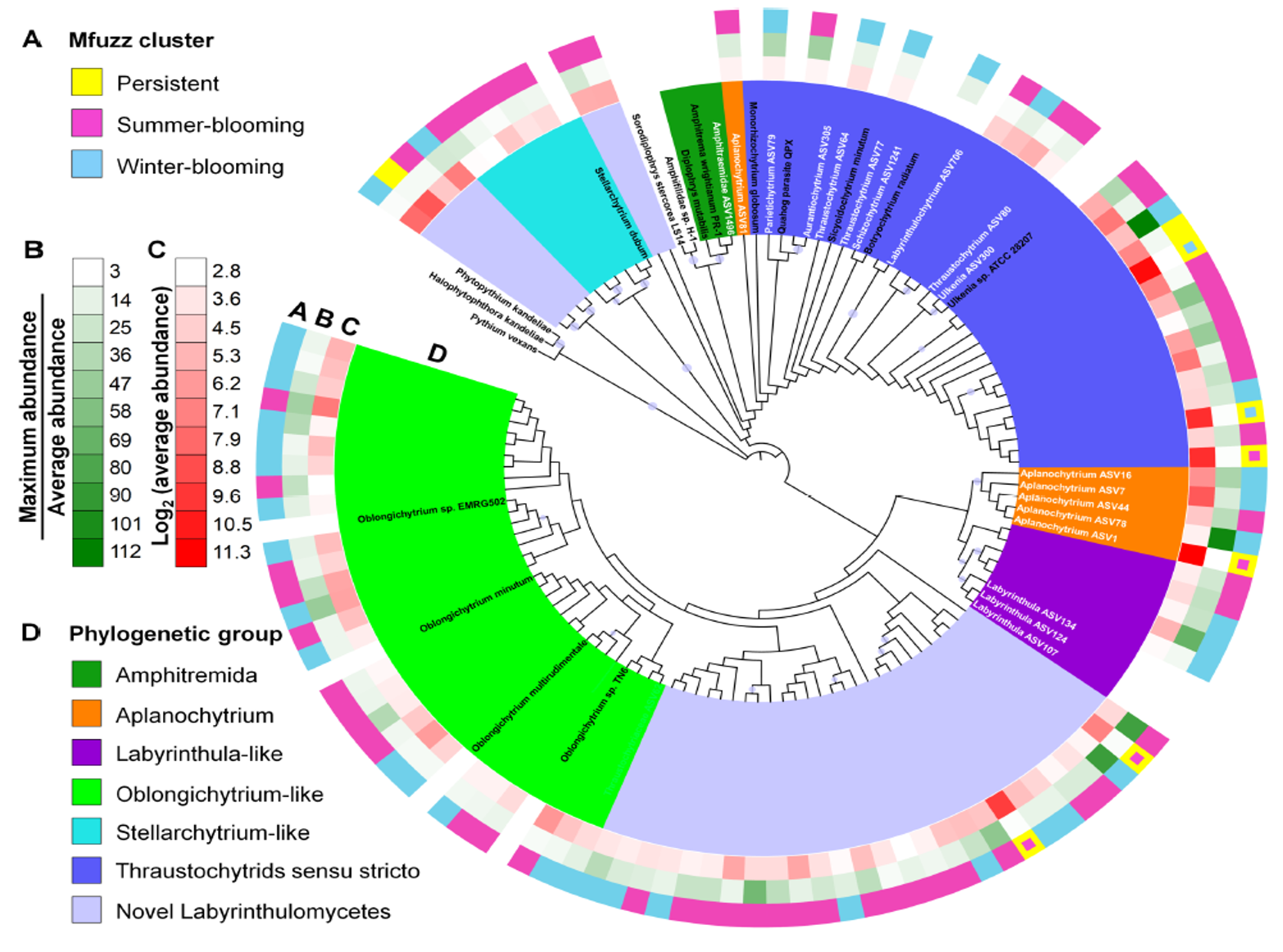 Heterotrophic microbes play a key role in remineralizing organic material in the coastal ocean. While there is a significant body of literature examining heterotrophic bacterioplankton and phytoplankton communities, much less is known about the diversity, dynamics, and ecology of eukaryotic heterotrophs. Here we focus on the Labyrinthulomycetes, a fungus-like protistan group whose biomass can exceed that of the bacterioplankton in coastal waters. We examined their diversity and community structure in a weekly temperate coastal ocean time series. Their seasonal community patterns were related to temperature, insolation, dissolved inorganic carbon, fungal abundance, ammonia, chlorophyll a, pH, and other environmental variables. Similar to the bacterioplankton, annual community patterns of the Labyrinthulomycetes were dominated by a few persistent taxa with summer or winter preferences. However, like the patterns of fungi at this site, the majority of the Labyrinthulomycetes phylotypes occurred mostly as short, reoccurring, season-specific blooms. Furthermore, some of specific phylotypes of Labyrinthulomycetes displayed time-lagged correlations or co-occurrences with bacterial, algal, or fungal phylotypes, suggesting their potentially multifaceted involvement in the marine food webs. Overall, this study reports niche partitioning between closely-related Labyrinthulomycetes and identifies distinct ecotypes and temporal patterns compared to bacterioplankton and fungi.
Heterotrophic microbes play a key role in remineralizing organic material in the coastal ocean. While there is a significant body of literature examining heterotrophic bacterioplankton and phytoplankton communities, much less is known about the diversity, dynamics, and ecology of eukaryotic heterotrophs. Here we focus on the Labyrinthulomycetes, a fungus-like protistan group whose biomass can exceed that of the bacterioplankton in coastal waters. We examined their diversity and community structure in a weekly temperate coastal ocean time series. Their seasonal community patterns were related to temperature, insolation, dissolved inorganic carbon, fungal abundance, ammonia, chlorophyll a, pH, and other environmental variables. Similar to the bacterioplankton, annual community patterns of the Labyrinthulomycetes were dominated by a few persistent taxa with summer or winter preferences. However, like the patterns of fungi at this site, the majority of the Labyrinthulomycetes phylotypes occurred mostly as short, reoccurring, season-specific blooms. Furthermore, some of specific phylotypes of Labyrinthulomycetes displayed time-lagged correlations or co-occurrences with bacterial, algal, or fungal phylotypes, suggesting their potentially multifaceted involvement in the marine food webs. Overall, this study reports niche partitioning between closely-related Labyrinthulomycetes and identifies distinct ecotypes and temporal patterns compared to bacterioplankton and fungi.
PUBLICATION: Annual Partitioning Patterns of Labyrinthulomycetes Reveal Their Multifaceted Role in Marine Microbial Food Webs
Home » Uncategorized » PUBLICATION: Annual Partitioning Patterns of Labyrinthulomycetes Reveal Their Multifaceted Role in Marine Microbial Food Webs
